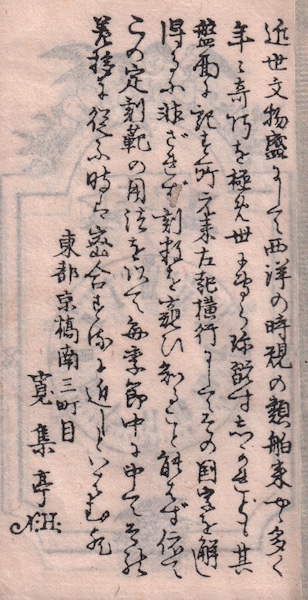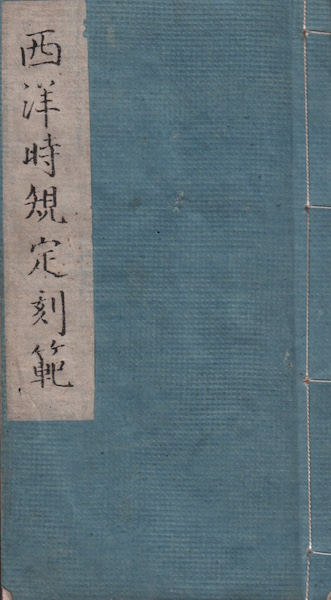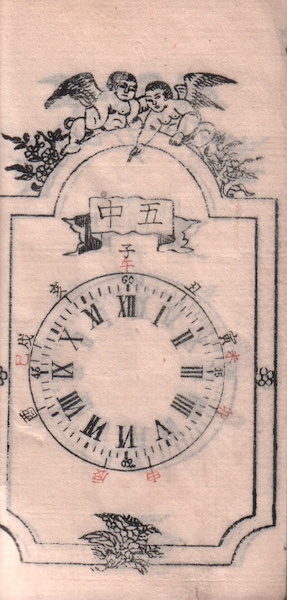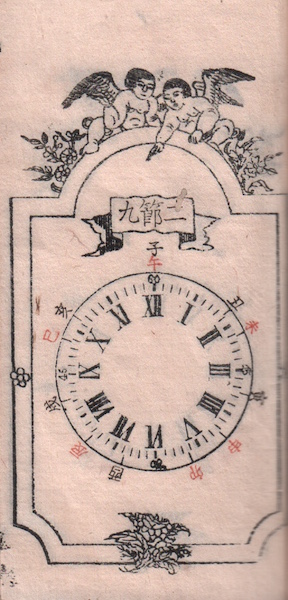TEI, Kanshu. Seiyo-Ji Kitei Koku-han. [How to Read a Western Clock].
(No place): No printing details, no date. (c.1850). Slim 12mo. Unaginated. An exquiste and fascinating volume from the Late Edo-period that serves as an instructional manual for the reading of a Western clock. This rare booklet comprises one printed page of text followed by 13 full page diagrams of cherub decorated Western clock faces with Japanese zodiac symbol notations. It wasn’t until 1872 that the Japanese government officially adopted Western style timekeeping practices, including equal hours that do not vary with the seasons, (and, also the Gregorian calendar). Previously the Japanese had used an (unequal) temporal hour system that varied with the seasons; the daylight hours being longer in summer and shorter in winter. This system was abolished at the start of the, 1868, The Meiji Restoration, an event that restored practical imperial rule to Japan under Emperor Meiji. The Meiji Emperor announced in his 1868 Charter Oath that “Knowledge shall be sought all over the world, and thereby the foundations of imperial rule shall be strengthened.” This modernization led to the the emergence of a western-styled clock industry that replaced the typical Japanese clock which only had six numbered hours, from 9 to 4, which counted backwards from noon until midnight; (the hour numbers 1 through 3 were not used for religious reasons, being the numbers of strokes that were used by Buddhists to call to prayer). The count ran backwards because the earliest Japanese artificial timekeepers used the burning of incense to count down the time. Dawn and dusk were therefore both marked as the sixth hour in the Japanese timekeeping system. In addition to the numbered temporal hours, each hour was assigned a sign from the Japanese zodiac. These vastly different methods of measuring time suggest that time by itself is not an absolute quantity and indeed the existence of clocks, which ostensibly measure “time,” doesn’t in any way prove time itself exists. This is a near fine copy in sewn blue paper wrappers with the original printed tissue cover. A rare and important work from the period when Japan started to modernize based on the European model, replacing the traditional Confucian hierarchical order that had persisted previously under a dominant China with one based on modernity.
$2,250.00
1 in stock






